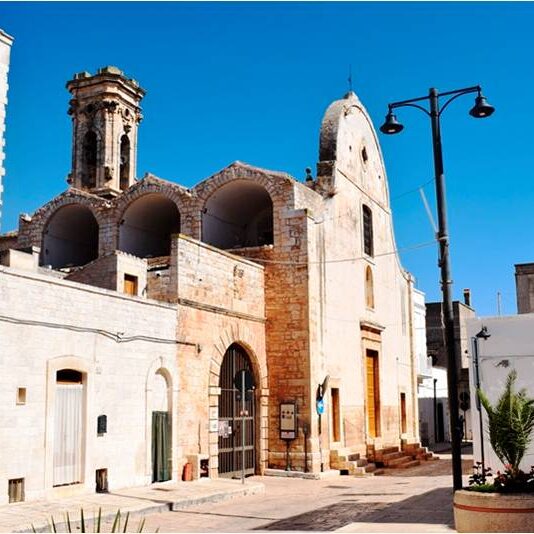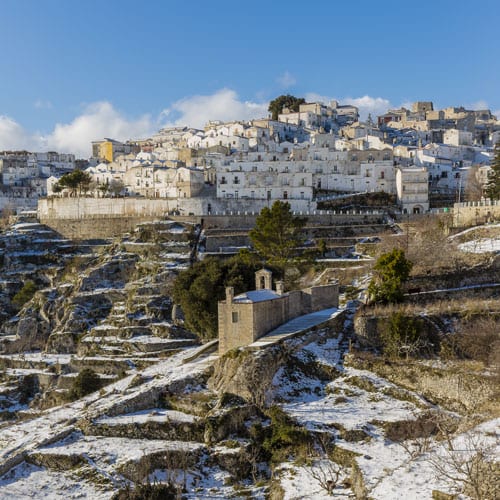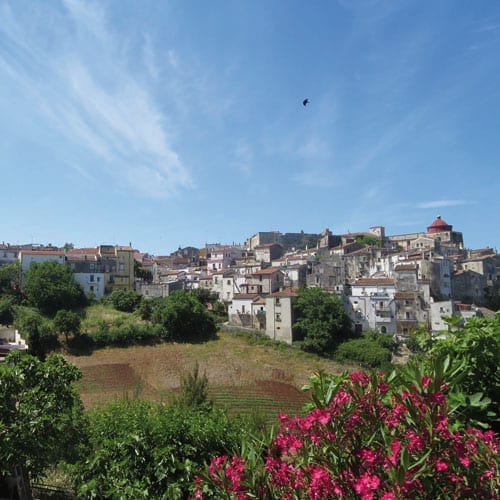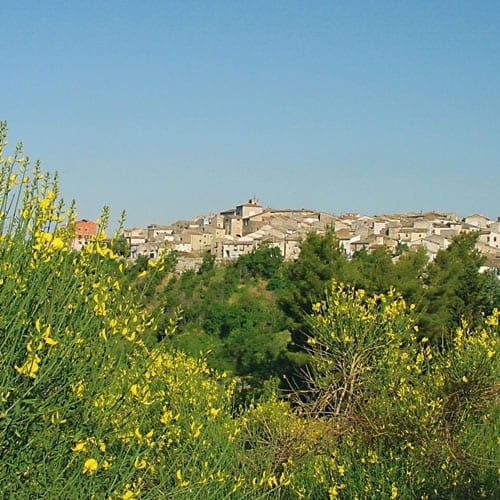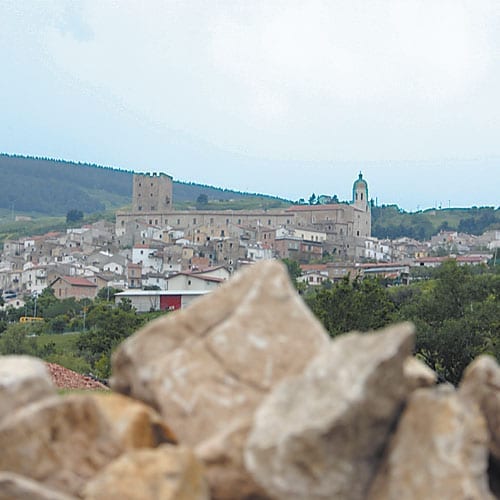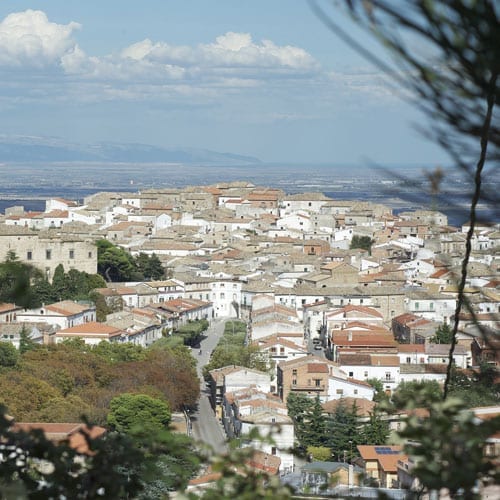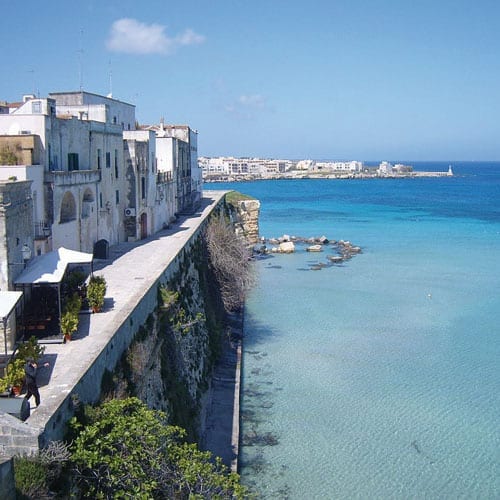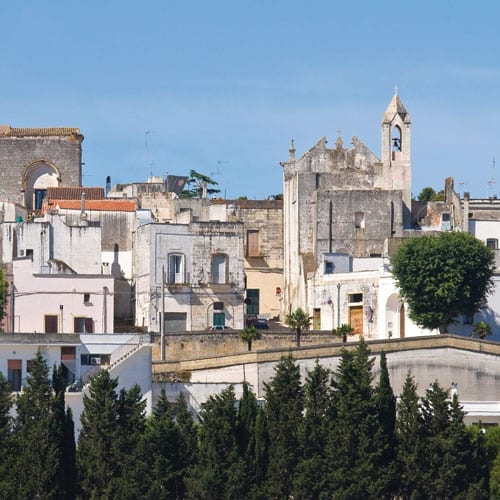 Maruggio
Maruggio
MUNICIPALITY OF MARUGGIO
(Province of Taranto)
Altitude
mt. 26 a.s.l.
POPULATION
5241
tourist information
Town Hall
Ph. 099 9701211
 The Name
The Name
The name “Maruggio” refers to two natural elements: it could derive from the name of a medicinal herb, Marubium, or from “dreary sea”, since its sea is characterized by the sirocco in winter months.
From the sea to the village: documentary sources testify that Maruggio was founded between 870 and 965. This explains the position, within a lowland between the hinterland and a wonderful coastline, of a long strip of sand, with a few rocky stretches in the eastern part, which rests on a sea called “of the seven colors”. The Dunes of Campomarino, which can reach a height of up to 12 metres, have been defined as being of Community interest with the establishment of the Regional Nature Reserve.
The Templars played a decisive role in the development of Maruggio: they were responsible for the drainage of the marshlands around the village and the start of salt extraction activities from the ponds along the coast.
Maruggio and the splendor of its landscape, dominated by mighty olive trees, and characterized by masserie (typical country houses of Apulia Region), votive chapels, majestic trulli and dry stone walls that run along the lush rows of vineyards where the Primitivo was born, fine wine from the unique harmony of colors, scents and flavors.
The historical centre of the borgo, once called Terra Murata because it was enclosed within the medieval walls, is now renamed “Sciangài“ in the local dialect, for the maze of narrow and winding streets, overlooked by ancient houses, whitewashed and enriched by Renaissance balconies of rare beauty.
The loggias and façades of the historic buildings, which bear important witness to the presence of the Templars and Knights of Malta in Maruggio, rise around the splendid SS. Nativity of the Virgin Mary Mother Church, built in 1400 by the Knights of Malta, using the whole carparo, the stone extracted directly from the quarries of Salento, whose yellow color paints gold the old town. The building, built between the fifteenth and sixteenth centuries, has Renaissance forms and it is embellished inside with some paintings by the Bianchi brothers (Mandurian painters), a wooden crucifix of the seventeenth century, and the Chapel of the Blessed Sacrament.
Of the same period is the Palazzo del Commendatore that flanks the main square of the borgo, at the end of which there was the so-called Porta Grande. It has been remodeled several times and preserves small oil mills on the ground floor.
The Knights of Malta also built the Church of St. John Outside the Walls, in honor of their Patron, with an adjoining small hospital now completely disappeared. Another historical monument of undisputed importance is the Convent of the Friars Minor Observant, now the town hall. At its entrance the enchanting cloister with its majestic porch, divided into twenty arches divided by octagonal pillars and embellished by 28 lunettes with seventeenth-century frescoes.
Another characteristic of the territory of Maruggio are the coastal towers. Three towers were erected in 1473 along the coast, for the sighting of Saracen marauders. The Torre dell’Ovo, 14 metres high, is situated on a cliff overlooking the sea.
The lido of Campomarino di Maruggio, a small seaside resort, is located 2 km from the historic centre. The centre was built in the 20th century in the area where the Torre de’ Molini, a 15th century anti-Saracen watchtower, the former Palazzo Seminarile and the port area once were. The Campomarino tourist fishing port is the largest recreational facility on the Ionian-Salentine coast. The coast of Maruggio offers 9 km of beaches, mainly sandy, enriched by the “sea of seven colors” and beautiful dunes, whose height reaches up to 12 meters above sea level.
The Dunes of Campomarino, identified as a Site of Community Interest, originated between 7500 and 3500 years ago, are among the best preserved in Italy and have developed a lush Mediterranean scrub, with shrub vegetation of juniper, esparto, mastic, rosemary and thyme.
Maruggio offers a variety of religious festivities, popular traditions and events (especially in summer) that make it, also from the cultural point of view, an interesting holiday destination.
After the feast of the Patron Saints “San Giovanni and San Cristoforo” (July 13-14), Maruggio and Campomarino host a series of events, including the “National Gathering of Small Bands” with the presence of numerous band associations from all over southern Italy, the “Road of Knowledge and Flavours” and the “Primitivo Jazz Festival”, events not to be missed for those who love good food (from wine and oil to the typical dishes of the local cuisine) and quality music.
In Campomarino, on August 15th you can appreciate the fascinating procession of the “Madonna dell’Alto Mare” which starts from the port of Campomarino to its votive chapel, where it is greeted by a fireworks display.
The gastronomic tradition of the Maruggio is closely linked to local agricultural production and fishing.
The typical aromas of the territory, such as rosemary, fennel and thyme are a must in the dishes of traditional cuisine. The local vegetables are used to prepare typical Apulian dishes, including stuffed aubergines, pipaluri spritti, fried zucchini flowers and fai and foji. Two exclusive bakery products from Maruggio are “li puddichi“, a typical spicy bread prepared in all homes in the Easter period with a mixture of water, flour and oil with cloves, cinnamon and pepper, and “li pezzuri“, a kind of baked pizza. Typical are also the breasts and purcidduzzi. The gastronomic overview is completed by the frise to be tasted with olive oil, salt, oregano and tomatoes and the pizzarieddi, a typical fresh pasta made with flour and water.
The centuries-old olive trees have a large structure that exceeds 5 meters in height and produce an excellent oil. Each dish of the local cuisine is accompanied by fine local wines, grapes of “Malvasia nera”, probably imported by the Knights of Malta and “Primitivo” particularly lush thanks to the proximity of the sea.




